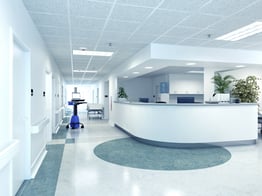In a hospital environment, alarm fatigue is an increasingly prevalent issue. Alarm fatigue is the sensory overload when clinicians are exposed to an excessive number of alarms; this can result in staff ignoring alarms, particularly if different devices employ similar sounds or frequencies. Nuisance alarms are those not representative of a patient in danger but come from devices that don't allow configuration for non-critical circumstances.

One of the best ways to reduce or prevent nuisance alarms is to choose products for the space that give users control over the alarms. A number of customizable features should be present in any device that produces audio and visual alarms in a healthcare space. 8 of the most common configurable features that reduce nuisance alarms can be organized into 3 main categories: Alarm Specifications, Door Alarms, and the Nurse's Station.
Alarm Specifications
1. Alarm time delay creates a set buffer of time (typically seconds) before an alarm will sound.
2. Alarm flutter buffer minimizes alarms crossing in and out of thresholds from constantly going on and off.
3. Alarm silence period allows staff to silence an alarm for a specified period of time before the alarm sounds again.
Door Alarms
4. Door alarm delay means staff will only be notified a door was left open after a sufficient period of time.
5. Door alarm disable allows clinicians to set alarms that will not sound if a specific door is open.
The Nurse's Station
6. Remote alarm silence is a room monitor alarm that can be silenced form the Nurse's Station.
7. A visual/audio split puts only a visual alarm in the patient's room and the audible alarm at the Nurse's Station to minimize patient impact.
8. Multi-room monitoring permits clinicians to monitor alarms from a central location - such as a Nurse's Station - where pre-alarm conditions can be viewed before they occur.
A high degree of flexibility and control over alarms allows hospital staff to focus on patient care and maintenance personnel to focus on issues that truly require their attention. Although not every method for reducing nuisance alarms is applicable to each healthcare or laboratory facility, the option to use these features can become important as procedures and policies change over time.
LEARN MORE about Setra’s room pressure monitors and pressure transducers.



